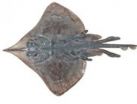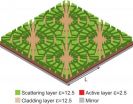(Press-News.org) Scientists are reporting significant changes in the distribution of coastal fish species in south-east Australia which they say are partly due to climate change.
CSIRO's Climate Adaptation and Wealth from Oceans Flagships have identified 43 species, representing about 30 per cent of the inshore fish families occurring in the region, that exhibited shifts thought to be climate-related.
These include warm temperate surf-zone species such as Silver Drummer and Rock Blackfish that are breeding and have become more abundant, and range increases in Snapper and Rock Flathead. There is also a greater abundance of warm water tunas and billfishes and occasional visits from Queensland Groper and Tiger Sharks.
"Furthermore, up to 19 species, or 5 per cent, of Tasmanian coastal fish fauna have undergone serious declines or are possibly extinct locally," says the Curator of the Australian National Fish Collection, Dr Peter Last. "At the same time many warm temperate species have moved in and colonised the cool temperate Tasmanian region.
"Shifts in the distribution of marine animals in response to climate change can be detrimental to some species. The problem is that in southern Tasmania, shallow cold water species have nowhere to escape warmer conditions in the sea," Dr Last says.
Particularly at risk are species such as the Maugean Skate, which is now confined to Port Davey and Macquarie Harbour in Tasmania's southwest.
Dr Last and his colleagues from CSIRO and the Tasmanian Aquaculture and Fisheries Institute outline the changes in a research paper published in the journal Global Ecology and Biogeography.
Their data come from a range of sources – published accounts, scientific surveys, spearfishing and angling competitions, commercial catches and underwater photographic records – from the late 1800s to the present. The findings support information provided in Australia's first Marine Climate Change Impacts Report Card, released in 2009, which describes recorded and projected changes to marine species from shifts in climate.
Dr Last says south-eastern Australia is a climate change hotspot with well-documented changes already occurring over the past 70 years, including; southward penetration of the East Australian Current by about 350 kilometres and a temperature rise of almost 2ºC.
"Increased water temperatures in the Tasman Sea are likely to have a cascading effect through local marine ecosystems and, for example, the Bass Strait islands act as stepping stones or distributional pathways south. Already we are seeing biological responses to these changes in the increased presence of sea urchins and fishes from further north."
INFORMATION:
Co-authors of the paper were: CSIRO's Will White, Dan Gledhill and Alistair Hobday, and Rebecca Brown, Graham Edgar and Gretta Pecl from the Tasmanian Aquaculture and Fisheries Institute at the University of Tasmania.
Climate change hits southeast Australia fish species
2010-09-28
ELSE PRESS RELEASES FROM THIS DATE:
Solar cells thinner than wavelengths of light hold huge power potential
2010-09-28
In the smooth, white, bunny-suited clean-room world of silicon wafers and solar cells, it turns out that a little roughness may go a long way, perhaps all the way to making solar power an affordable energy source, say Stanford engineers.
Their research shows that light ricocheting around inside the polymer film of a solar cell behaves differently when the film is ultra thin. A film that's nanoscale-thin and has been roughed up a bit can absorb more than 10 times the energy predicted by conventional theory.
The key to overcoming the theoretical limit lies in keeping ...
A revolutionary new way of reversing certain cancers
2010-09-28
Australian and American scientists have found a way of shrinking tumours in certain cancers – a finding that provides hope for new treatments.
The cancers in question are those caused by a new class of genes known as 'microRNAs', produced by parts of the genome that, until recently, were dismissed as 'junk DNA'. While much is still unknown about microRNAs, it is clear that they can interfere with how our genes are 'read'.
The current finding identifies one particular microRNA (microRNA 380) that appears to disable the king of tumour suppressors, the P53 gene. So important ...
2010 AAO-HNSF miniseminars: Tuesday, Sept. 28, 2010
2010-09-28
Boston, MA – The 2010 Annual Meeting & OTO EXPO of the American Academy of Otolaryngology – Head and Neck Surgery Foundation (AAO-HNSF), the largest meeting of ear, nose, and throat doctors in the world, will convene September 26-29, 2010, in Boston, MA.
Featuring more than 305 scientific research sessions, 594 posters, and several hundred instruction course hours for attendees, the annual meeting is a unique opportunity for journalists from around the world to cover breaking science and medical news. Reporters will have access to the latest research and clinical advances ...
2010 AAO-HNSF new research highlights: Tuesday, Sept. 28, 2010
2010-09-28
PACU PTH Facilitates Safe Outpatient Total Thyroidectomy
Presenters: William Pechter, MS; David Steward, MD; Jeffrey Houlton, MD; Naresh Panda, MS, FRCSEd
Time: 8: 32 am
Location: 254
Boston, MA – A study was performed reviewing thyroidectomies from March 2008 to November 2009, to determine if a serum parathyroid hormone (PTH)-based discharge algorithm can be used to safely facilitate outpatient total thyroidectomy.
In a presentation at the 2010 AAO-HNSF Annual Meeting & OTO EXPO in Boston, researchers revealed that 180 patients (mean age 48.9, 83.3% female) underwent ...
More developing countries show universal access to HIV/AIDS services is possible
2010-09-28
28 September 2010 | GENEVA / NAIROBI / WASHINGTON D.C – Significant progress has been made in several low- and middle-income countries in increasing access to HIV/AIDS services, according to a new report released today. The report Towards Universal Access by the World Health Organization (WHO), the United Nations Children's Fund (UNICEF) and the Joint United Nations Programme on HIV/AIDS (UNAIDS) is the fourth annual report for tracking progress made in achieving the 2010 target of providing universal access to HIV prevention, treatment and care.
The report assessed ...
GOES-13 Satellite sees Lisa a tropical storm ... for now
2010-09-28
The GOES-13 satellite has been keeping an eye on Tropical Storm Lisa and watched her birth, graduation to depression then tropical storm and back to depression. Now, Lisa has grown back to tropical storm status, but it may be short-lived.
At 11 a.m. EDT on Friday, Sept. 24, Tropical Storm Lisa had maximum sustained winds near 50 mph and she may strengthen and weaken over the weekend, but by Sunday colder waters will zap her energy source and she is forecast to be a depression.
Meanwhile, on Sept. 24, she was still frolicking in the eastern Atlantic, about 320 miles ...
Scientists discover gene linked to a common form of migraine
2010-09-28
Montreal, September 26th, 2010 at 1:00 PM – An international study led by scientists at Université de Montréal and University of Oxford, has identified a gene associated with common migraines. Their findings show that a mutation in the KCNK18 gene inhibits the function of a protein called TRESK. TRESK normally plays a key role in nerve cell communication. Published today in Nature Medicine, this study may have implications for people who suffer from recurrent headaches, which include more than six million Canadians.
Previously, genes for migraine have been found only ...
Single electron reader opens path for quantum computing
2010-09-28
A team led by engineers and physicists at the University of New South Wales (UNSW) in Sydney, Australia, have developed one of the key building blocks needed to make a quantum computer using silicon: a "single electron reader". Their work was published today in Nature.
Quantum computers promise exponential increases in processing speed over today's computers through their use of the "spin", or magnetic orientation, of individual electrons to represent data in their calculations.
In order to employ electron spin, the quantum computer needs both a way of changing the ...
2010 AAO-HNSF miniseminars: Monday, Sept. 27, 2010
2010-09-28
Boston, MA – The 2010 Annual Meeting & OTO EXPO of the American Academy of Otolaryngology – Head and Neck Surgery Foundation (AAO-HNSF), the largest meeting of ear, nose, and throat doctors in the world, will convene September 26-29, 2010, in Boston, MA.
Featuring more than 305 scientific research sessions, 594 posters, and several hundred instruction course hours for attendees, the annual meeting is a unique opportunity for journalists from around the world to cover breaking science and medical news. Reporters will have access to the latest research and clinical advances ...
2010 AAO-HNSF new research daily highlights: Monday, Sept. 27, 2010
2010-09-28
Inner Ear Stem-Cell Transplantation in Cochlear Cultures
Presenters: Dylan K. Chan, MD, PhD; Saku Sinkkonen, MD, PhD; Alan G. Cheng, MD; Stefan Heller, PhD
Time: 9:46 am
Location: Room 209
Boston, MA – Researchers have developed an in vitro system to investigate hair-cell regeneration techniques and evaluate the ability of transplanted inner-ear stem-cell spheres to integrate into the organ of Corti and differentiate into mature hair cells.
In a presentation at the 2010 AAO-HNSF Annual Meeting & OTO EXPO in Boston, researchers revealed that co-culture between inner-ear ...


